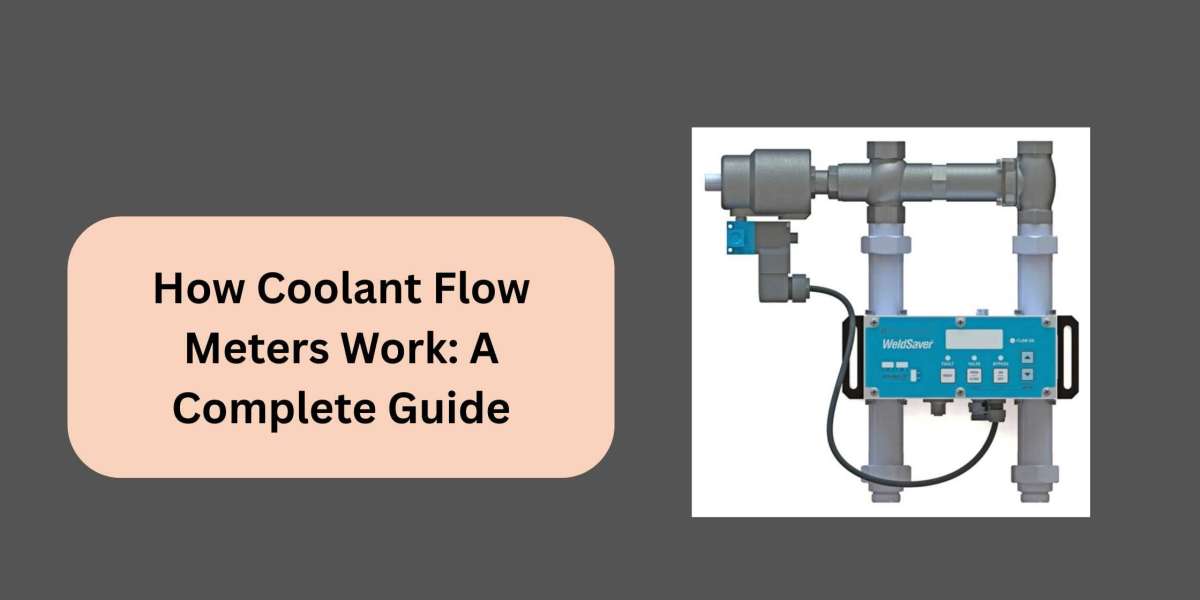A coolant flow meter is a device that accurately measures the flow rate of coolant fluid in various systems. These meters are essential in industrial, automotive, and HVAC applications where temperature control is critical. Coolant flow measurement ensures system efficiency, prevents overheating, and helps maintain safety. These meters provide vital performance data for machine cooling, industrial machinery, or climate control. Several types of coolant flow meter exist—mechanical, ultrasonic, electromagnetic, and thermal mass—each designed for specific environments and needs. Understanding the basics helps choose the proper meter for optimized cooling and system longevity.
Understanding Coolant Flow Basics
Coolant is a heat-transfer fluid that absorbs excess heat from systems and dissipates it to maintain optimal operating temperatures. It's commonly composed of water mixed with glycol or other additives to improve performance and reduce freezing or boiling risks. In closed-loop systems, coolant continuously circulates to regulate temperature. Monitoring this flow is crucial—insufficient flow can lead to overheating and equipment failure, while excess flow can waste energy. Accurate flow measurement ensures balanced thermal control, energy efficiency, and system reliability across industrial processes, automotive machines, and HVAC units, making coolant flow monitoring a vital aspect of modern systems.
What Is a Coolant Flow Meter?
A coolant flow meter is a precision instrument designed to measure a system's flow rate of coolant fluid. It ensures that the right amount of coolant is delivered to maintain optimal performance and prevent overheating. These meters are used across automotive, aerospace, manufacturing, and HVAC industries. Key features include high accuracy, real-time data output, and material compatibility with various coolant types. With advanced designs, some models also provide digital readouts and alarm functions. Selecting a suitable flow meter ensures consistent cooling performance and supports preventative Maintenance in demanding operational environments.
How Coolant Flow Meters Work?
Coolant flow meters detect the volume or speed of fluid passing through a pipe. Mechanical types like turbine meters use moving parts to calculate flow, while non-mechanical meters such as ultrasonic or magnetic models rely on electronic signals. Turbine meters use a spinning rotor; ultrasonic meters measure sound waves; electromagnetic models track changes in magnetic fields; and thermal mass meters detect temperature shifts caused by fluid flow. Each type uses a specific principle to convert physical movement or changes into readable digital data, enabling precise monitoring and control of coolant flow in real time.
Installation and Calibration
Proper installation of a coolant flow meter is crucial for accurate performance. Key factors include correct alignment with pipe flow, appropriate pipe diameter, and avoiding bubbles or debris that may affect readings. Select a meter based on flow range and pressure requirements. Calibration is essential to maintain accuracy; manufacturers typically recommend periodic Calibration based on operating hours or system conditions. Installing meters in a straight pipe section—away from bends, valves, or pumps—improves reliability. Professional installation and automated calibration tools can reduce setup errors and ensure the system consistently performs within desired tolerances.
Troubleshooting and Maintenance
Common issues with coolant flow meters include signal drift, clogging, or sensor wear. These often stem from contaminated coolant, improper installation, or aged components. Regular cleaning—especially for mechanical meters—helps prevent buildup that can impair readings. Non-mechanical types need less Maintenance but should be checked for electronic integrity and firmware updates. Scheduled inspections and recalibrations extend lifespan and ensure long-term accuracy. When troubleshooting, look for inconsistent readings, alerts, or physical damage. Addressing issues early can prevent major failures and improve system efficiency. Always follow the manufacturer’s maintenance guidelines for optimal operation and reliability.
Choosing the Right Coolant Flow Meter
Selecting the proper coolant flow meter depends on your application, fluid type, and system requirements. Consider whether the fluid is conductive, the operating temperature, and the system is closed or open-loop. Evaluate required accuracy, pressure range, and whether you need real-time digital output. Balance budget with performance—mechanical meters are cost-effective but need more Maintenance; non-mechanical options offer longevity with a higher initial cost. Also, chemical compatibility must be verified to prevent corrosion or sensor degradation. Choose a meter that aligns with your system’s flow characteristics and integrates easily into existing controls or software.
Conclusion
Coolant flow meters are essential for safe, efficient industrial, automotive, and HVAC operations. From basic mechanical designs to advanced IoT-enabled smart meters, the right choice ensures accurate temperature control and system longevity. Understanding the different technologies, installation requirements, and maintenance practices helps select the most suitable meter. For reliable, high-performance coolant flow measurement, trust experts like Proteus Industries Inc. Their cutting-edge solutions are designed for precision, durability, and seamless digital integration—making them a trusted name in flow monitoring solutions across demanding environments.
FAQs
Can I use a water flow meter for coolant?
Only if it’s compatible with coolant properties and temperatures.
How do I know if my coolant flow meter is accurate?
Check calibration records and compare them against known flow rates regularly.
What’s the lifespan of a typical coolant flow meter?
5–10 years on average, depending on the type and Maintenance.
Do coolant flow meters need regular cleaning?
Yes, especially mechanical types; clean based on coolant quality.
Are digital meters worth it?
Absolutely—for real-time alerts, data logging, and predictive maintenance features.



